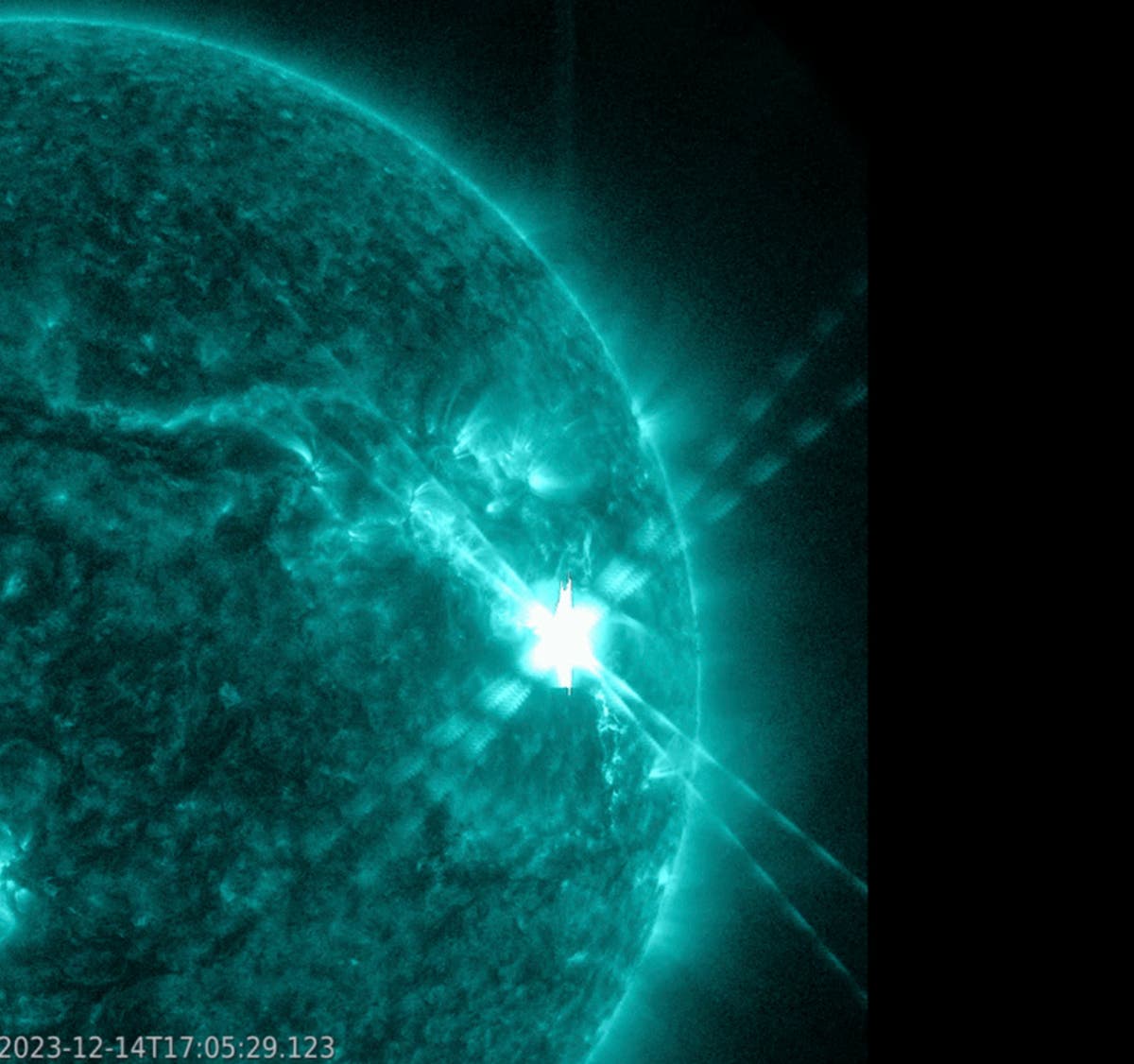A NASA telescope has captured the biggest solar flare in years, which temporarily knocked out radio communication on Earth.
The sun spit out the huge flare on Thursday, resulting in two hours of radio interference in parts of the U.S. and other sunlit parts of the world. Scientists said it was the biggest flare since 2017.
Multiple pilots reported communication disruptions, with the impact felt across the country, said the government’s Space Weather Prediction Center. Scientists are now monitoring this sunspot region and analyzing for a possible outburst of plasma from the sun, also known as a coronal mass ejection, directed at Earth. The eruption occurred in the far northwest section of the sun, according to the center.
NASA’s Solar Dynamics Observatory caught the action in extreme ultraviolet light, recording the powerful surge of energy as a huge, bright flash. Launched in 2010, the spacecraft is in an extremely high orbit around Earth, where it constantly monitors the sun.
The sun is nearing the peak of its 11-year or so solar cycle. Maximum sunspot activity is predicted for 2025.
___
The Associated Press Health and Science Department receives support from the Howard Hughes Medical Institute’s Science and Educational Media Group. The AP is solely responsible for all content.

Dr. Thomas Hughes is a UK-based scientist and science communicator who makes complex topics accessible to readers. His articles explore breakthroughs in various scientific disciplines, from space exploration to cutting-edge research.








